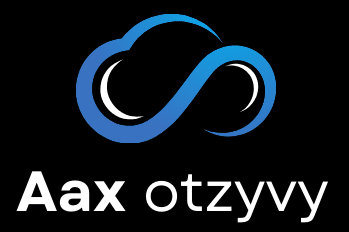
Mastering ai detection: your path to authentic content
As AI continues to redefine content creation, mastering AI detection becomes essential for maintaining authenticity. Discover the cutting-edge tools that can help you differentiate between human and AI-generated text. Explore how GPTZero, with its advanced capabilities, empowers educators and writers alike. Gain insights into performance, user experiences, and practical applications to ensure your content remains genuine and trustworthy. Your journey toward authentic content starts here.
Overview of AI Detection Tools
Harnessing AI detection technology is becoming pivotal for ensuring content authenticity. These tools penetrate the nuances of AI-generated text, varying from mere refinements to entirely machine-created pieces. By integrating the ai detector within your digital workflow, you empower yourself to uphold academic and professional integrity.
En parallèle : How can AI be used to enhance the precision of financial risk assessment tools?
Leading AI detectors such as GPTZero, QuillBot, and ZeroGPT offer distinct features that cater to various needs. GPTZero, with a user base exceeding 2.5 million, excels in identifying AI-created documents. It employs a rigorous multi-component process to enhance accuracy, making it particularly favored in educational and professional settings. QuillBot, on the other hand, allows for multilingual analysis and helps identify AI-refined content, ensuring comprehensive content evaluations. ZeroGPT offers advanced capabilities with DeepAnalyse™ Technology to perform precise AI detection tasks while minimizing errors.
When comparing usability and accessibility, these platforms vary in integration capabilities with software like Google Docs or even messenger platforms, providing diverse utilities for users. The choice of a tool ultimately rests on your specific needs, focusing on transparency, language versatility, and seamless integration.
A voir aussi : What are the key considerations for developing a secure AI-powered loan approval system?
Effectiveness of AI Detectors
Performance Metrics of AI Detectors
Understanding the capabilities of AI detectors hinges on several key performance metrics. These include precision, which measures the fraction of detected AI-generated content that is correctly identified, and recall, which assesses the tool’s ability to detect all relevant AI-generated text within a document. High scores in both metrics indicate a detector's ability to minimize false positives and false negatives.
Real-World Accuracy Comparisons
When comparing the accuracy of AI detectors in real-world scenarios, tools like GPTZero stand out. With its multi-step process involving a combination of sentence analysis, users experience robust detection capabilities across different text levels. The integration of advanced features enhances its application in both educational and professional settings.
Common Limitations and Challenges
Despite their effectiveness, AI detectors face limitations. As AI-generated content evolves, detectors may struggle with heavily modified text. This underscores the importance of continued refinement in detection algorithms. Additionally, results should not be used punitively; instead, they should encourage a holistic approach in assessing content originality and integrity.
Practical Applications of AI Detection Tools
Enhancing Academic Integrity with AI Detectors
AI detection tools prove indispensable in maintaining academic honesty. GPTZero, a widely acclaimed solution, supports over 2.5 million users by differentiating human-written content from AI-generated text. This tool assists educators in verifying the authenticity of student submissions, fostering trust and transparency. Similarly, QuillBot’s AI Detector aids in upholding ethical writing by distinguishing between original and AI-enhanced work. By analyzing word choices and sentence structures, these detectors help educators combat potential academic misconduct.
Use Cases in Professional Content Creation
In the realm of professional content creation, AI detectors play a pivotal role. They enable writers to verify originality, ensuring content aligns with ethical standards. The Compilatio AI Checker and ZeroGPT are among the tools employed to scrutinize content, identifying AI-generated excerpts that may jeopardize credibility. These tools support diverse writing contexts, offering features like text summarizers and plagiarism checks, thereby enhancing the quality and authenticity of content produced for professional use.
Support for Multilingual Users and Diverse Writing Contexts
AI detection tools cater to multilingual users, making them invaluable across various languages and cultural settings. For instance, QuillBot’s AI Detector and ZeroGPT support multiple languages, including English, French, and Spanish, allowing users worldwide to ensure their content's originality. Furthermore, the Compilatio AI Checker highlights cultural nuances and context, ensuring comprehensive analysis regardless of linguistic diversity. These features empower users to maintain integrity and authenticity globally, fostering ethical practices across educational and professional environments.
Choosing the Right AI Detection Tool
Key Features to Consider When Selecting a Tool
Choosing the best AI detection tool involves evaluating multiple factors. First, assess the detection capabilities—does the tool accurately differentiate between AI-generated and human-written content? Tools like GPTZero and Compilatio AI Checker are noted for their high precision in identifying AI content. Consider the integration capacity; it’s beneficial if the tool seamlessly integrates with platforms like Google Docs or Moodle. Multilingual support broadens usability, making detectors like QuillBot appealing for diverse linguistic needs. Finally, examine the scalability and flexibility of the tool to ensure it meets your long-term requirements.
User Feedback and Reviews Analysis
Feedback from actual users provides invaluable insights into a tool’s performance. Users have praised GPTZero and ZeroGPT for their robust detection and accuracy. For educational applications, reliability in maintaining academic integrity is crucial. Tools that offer detailed, actionable reports are highly regarded for promoting ethical writing practices. Pay attention to community reviews and case studies to understand the practical effectiveness of these technologies in varied scenarios.
Future Innovations in AI Detection Technology
AI detection technology continues to evolve rapidly. Trends suggest a focus on improving real-time detection and reducing false positives. Future advancements may include enhanced contextual analysis, allowing for even finer distinctions between AI-refined and original content. Stay informed about developments to ensure your chosen tool remains competitive and effective.
